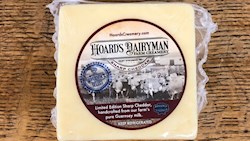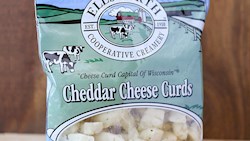Best Wisconsinite Food Producers
Sartori Cheese is a brand specializing in the production of high-quality cheeses with a particular emphasis on artisanal and hand-crafted products. Founded in a small business in Wisconsin, Sartori quickly became known for its innovative production techniques and unique, rich flavors of cheese.
The brand offers a wide range of cheeses, including various types of hard cheeses as well as cheeses with added spices and herbs, enhancing every bite. Sartori is renowned for using the finest milk from local farms in its production process, creating cheeses that not only meet high taste standards but also provide a richness of textures and aromas that develop over time.
AWARDS

World Cheese Awards - Gold
2023
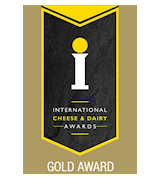
International Cheese Awards - Gold
2024, 2023, 2022, 2019

American Cheese Society Judging & Competition Awards - 1st Place
2024, 2016, 2015, 2014, 2012, 2011, 2010, 2009, 2008, 2007
BEST Sartori Cheese Cheeses
LaClare Creamery is a family-owned goat cheese producer known for its passion for creating high-quality, distinctly flavorful goat cheeses. Located in Malone, Wisconsin, LaClare Creamery is committed to producing premium cheeses from fresh, clean goat milk.
The company blends traditional cheesemaking techniques with modern innovation to craft cheeses with rich, complex flavors. Their product range includes a variety of goat cheeses, from creamy chèvres to hard cheeses, all made with the utmost care and attention to detail.
AWARDS
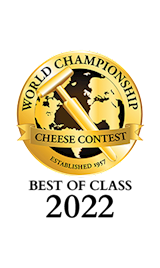
World Championship Cheese Contest - Best of Class
2024, 2022, 2018, 2014

American Cheese Society Judging & Competition Awards - 1st Place
2024, 2023, 2019, 2018, 2015, 2011
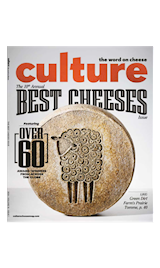
Culture Cheese Magazine Best Cheeses issue - Best
2023
BEST LaClare Creamery Cheeses
Nordic Creamery, located in Westby, Wisconsin, is a cheese producer that focuses on crafting artisan cheeses and butter using milk from local cows, goats, and sheep. The company is committed to sustainable practices, including the use of non-GMO feed for their animals.
Additionally, Nordic Creamery has won several awards for its products at national cheese competitions.
AWARDS
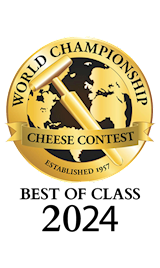
World Championship Cheese Contest - Best of Class
2024

US Championship Cheese Contest - Gold
2017

American Cheese Society Judging & Competition Awards - 1st Place
2008
BEST Nordic Creamery Cheeses
Rishi Tea & Botanicals is a renowned brand specializing in high-quality organic teas and botanical products. With a commitment to direct trade and sustainability, Rishi Tea brings authentic and carefully sourced teas from various parts of the world, including China, Japan, Taiwan, and India.
Their offerings cover a wide range, from classic black and green teas to innovative botanical infusions, matcha powders, and various tea accessories. Rishi Tea focuses on supporting sustainable practices in production and export, delivering tea that combines tradition with innovation.
BEST Rishi Tea & Botanicals Teas and Herbal Infusions
BelGioioso Cheese, based in Green Bay, USA, is renowned for its production of Italian-style cheeses since 1979. The company operates out of multiple facilities and crafts over 27 different varieties of cheese. BelGioioso is known for its commitment to quality, using fresh, local milk and traditional cheesemaking methods.
This commitment is evident in their practice of processing milk into cheese on the same day it is collected from local farms to ensure freshness and flavor. BelGioioso has been recognized widely in the cheese industry, receiving numerous awards from prestigious competitions like the World Cheese Championship and the American Cheese Society.
AWARDS

World Cheese Awards - Gold
2021

World Championship Cheese Contest - Best of Class
2024, 2022, 2020, 2018, 2016, 2014, 2012, 2010

American Cheese Society Judging & Competition Awards - 1st Place
2024, 2023, 2022, 2019, 2018, 2017, 2016, 2015, 2014, 2012, 2011, 2010, 2009, 2008, 2007, 2006, 2003, 2002, 2000
BEST BelGioioso Cheese Cheeses
Uplands Cheese located in Dodgeville, Wisconsin, is renowned for its artisanal cheese production, particularly the Pleasant Ridge Reserve and Rush Creek Reserve. The company operates on a dairy farm that has been milking cows for over a century. The farm is uniquely situated on Pleasant Ridge in the Driftless region of southwestern Wisconsin, which is ideal for the diverse range of grasses that contribute to the high-quality milk produced by their cows.
The farm is managed with a focus on sustainable, seasonal, and pasture-based systems. This approach includes rotational grazing, which ensures fresh pasture for the cows daily, contributing to the exceptional flavors of their milk. The company's commitment to traditional cheesemaking methods, combined with innovative approaches to enhance the unique flavors of their farm, has established Uplands Cheese as a leading example of artisanal cheesemaking in the U.S..
AWARDS

American Cheese Society Judging & Competition Awards - 1st Place
2024, 2023, 2022, 2019, 2012, 2011, 2010, 2005, 2001

Culture Cheese Magazine Best Cheeses issue - Best
2023
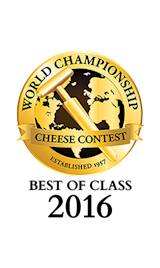
World Championship Cheese Contest - Best of Class
2016
BEST Uplands Cheese Cheeses
Carr Valley Cheese is a family-owned cheese company located in Wisconsin, known for its traditional cheesemaking techniques passed down through generations. It produces a wide variety of cheeses, including artisanal and specialty cheeses, that have won numerous national and international awards.
The company operates multiple retail stores across Wisconsin.
AWARDS

International Cheese Awards - Gold
2024, 2023, 2022, 2019
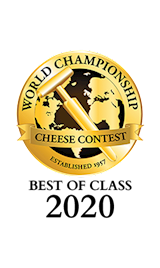
World Championship Cheese Contest - Best of Class
2020, 2016, 2012, 2010

American Cheese Society Judging & Competition Awards - 1st Place
2014, 2013, 2012, 2011, 2010, 2009, 2008, 2007, 2006, 2005, 2004, 2003, 2002
BEST Carr Valley Cheese Cheeses
Klondike Cheese, based in Monroe, Wisconsin, has been producing cheese since the late 1800s. It is operated by the Buholzer family, who are into their fourth generation of cheese makers. The company specializes in Greek-style feta cheese but also produces other varieties such as Havarti, Muenster, and brick cheese.
Klondike Cheese has won multiple awards for its products at national and international cheese competitions.
AWARDS

World Championship Cheese Contest - Best of Class
2024, 2022, 2020, 2018, 2016, 2012, 2010

American Cheese Society Judging & Competition Awards - 1st Place
2024, 2023, 2022, 2019, 2018, 2017, 2016, 2015, 2014, 2013, 2012, 2011, 2010, 2009, 2008, 2006, 2004
BEST Klondike Cheese Cheeses
Widmer's Cheese Cellars, located in Theresa, Wisconsin, specializes in producing Brick, Cheddar, and Colby cheeses. Established in 1922 by Swiss immigrant John O. Widmer, the company is noted for its traditional cheese-making techniques, particularly its Brick cheese, which is crafted using a process passed down through three generations of the Widmer family.
The factory continues to use original bricks to press their Brick cheese, maintaining a link to its historical production methods.
AWARDS

World Championship Cheese Contest - Best of Class
2024, 2020

American Cheese Society Judging & Competition Awards - 1st Place
2023, 2022, 2019, 2018, 2017, 2016, 2015, 2014, 2012, 2010, 2007, 2005, 2002

Culture Cheese Magazine Best Cheeses issue - Best
2023
BEST Widmer's Cheese Cellars Cheeses
AWARDS

American Cheese Society Judging & Competition Awards - 1st Place
2010, 2009, 2008, 2007, 2006, 2005, 2004, 2002, 2001, 2000
BEST Roth Käse Cheeses
TasteAtlas food rankings are based on the ratings of the TasteAtlas audience, with a series of mechanisms that recognize real users and that ignore bot, nationalist or local patriotic ratings, and give additional value to the ratings of users that the system recognizes as knowledgeable. TasteAtlas Rankings should not be seen as the final global conclusion about food. Their purpose is to promote excellent local foods, instill pride in traditional dishes, and arouse curiosity about dishes you haven’t tried.


















